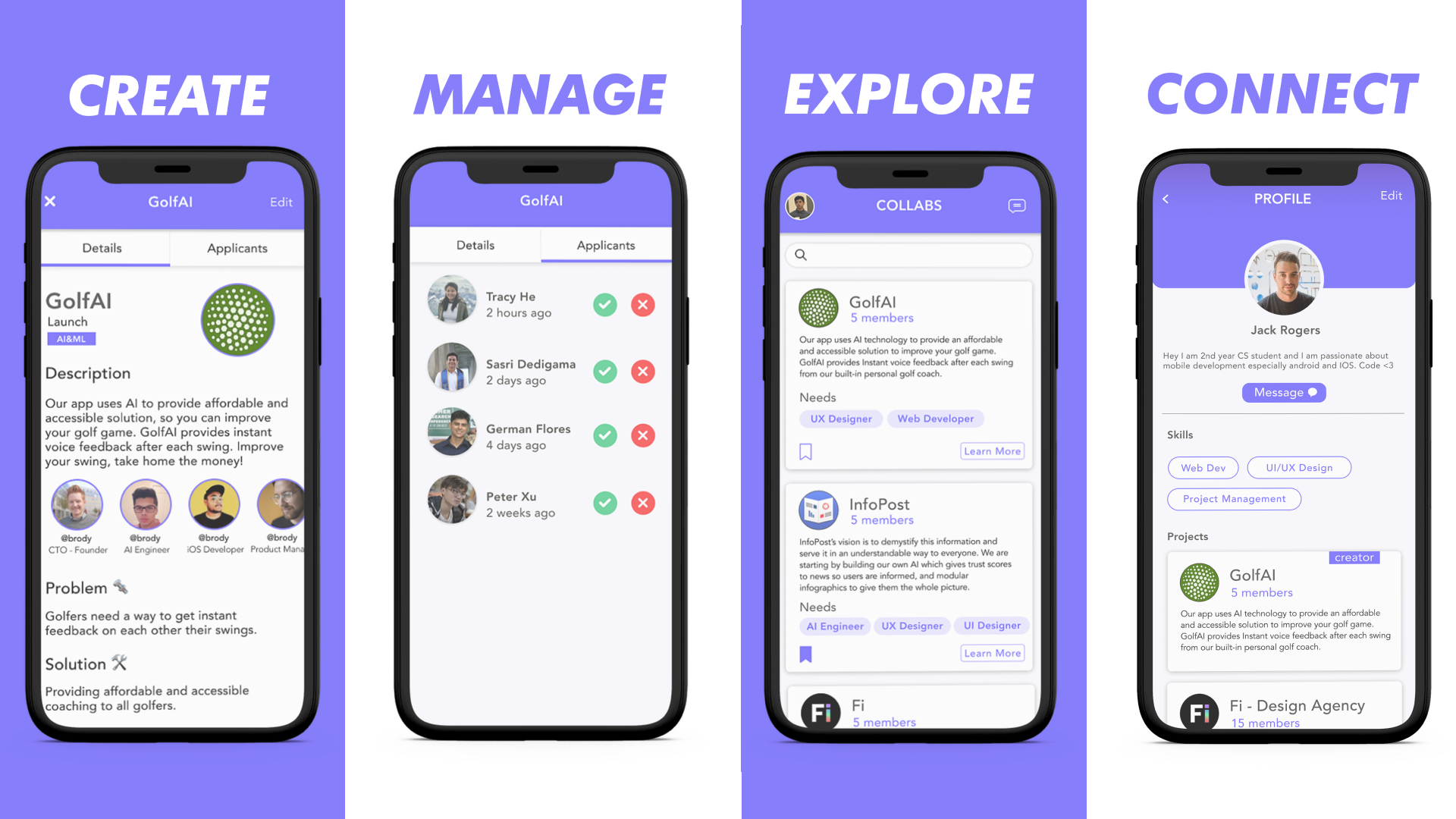Summary
Led a team of 4 designers to build a social media platform for college students to help students build real life experience for internships and post college employment.
Background
Collabs is social media app where college students can find projects to work on or start their own project and find teammates.
Role
I was the lead designer at Collabs. I worked with a cross functional product team to take a product from inception to launch. I worked closely with 4 other designers to spear design initiatives like user research, building a scalable component library on Figma and building assets for marketing.
Problem Statements
College students need a way to build projects to fill gaps in their work experience for internships and job hunting.
College students need a way to find teammates to build their current projects or start new ones.
Process
Before my work at Collabs, the company was already building a social media mobile app but with no clear path. Collabs was trying to help college students connect and start projects together. As the new designer to the team, I had three important questions to answer:
1. Are we solving the right problem?
2. Are we building the right solution?
3. Are we building the product right?
Surveys
We first conducted a survey that garnered 126 UCSD student participants. The survey asked questions about student’s experiences with projects in and out of the classroom, we uncover similarities(trends) in their frustrations/needs/delights.
“Finding new collaborators outside UCSD is challenging. It's like the wild west out there. If they're part of UCSD we can trust that they're part of the system and share an understanding. It's harder to recruit outside our network.’ “
- Anonymous Student
“[It's] difficult for others to take the project seriously and to have guaranteed involvement (e.g. Not flake, respond to texts, etc.).Additionally, it was difficult to replace others so that the project could proceed in a timely manner via only word of mouth”
- Anonymous Student
Through this exercise, we also discovered that students were hesitant to push their projects outside of school because they lacked the time, resources, passion, and confidence to do so. While some of these are problems beyond our control, we found that there was still a need to provide an easy way for users to find collaborators and create a project when the circumstances were right for them.
Once we understood some commonalities in the student survey data.We wanted to dive deep into these similarities and learn more about it.
User Interviews
We conducted 12 user interviews to gain a deeper understanding of our survey findings. We interviewed some students who have projects on their own and gone on to build startups and students who were looking for projects to join.
Our key findings for project founders were:
- A quick way to display their project and find like-minded individuals to work with.
- A quick way to learn about the applicant and connect with them.
- An easy way to manage their team recruitment
Our key finding for project seekers were:
- A quick way to explore and join different projects
- A quick application process
- A way to make presenting themselves easier and less tedious than the standard resume
Defining the user journey and spotting opportunities to reduce user frustration and increase user delight.
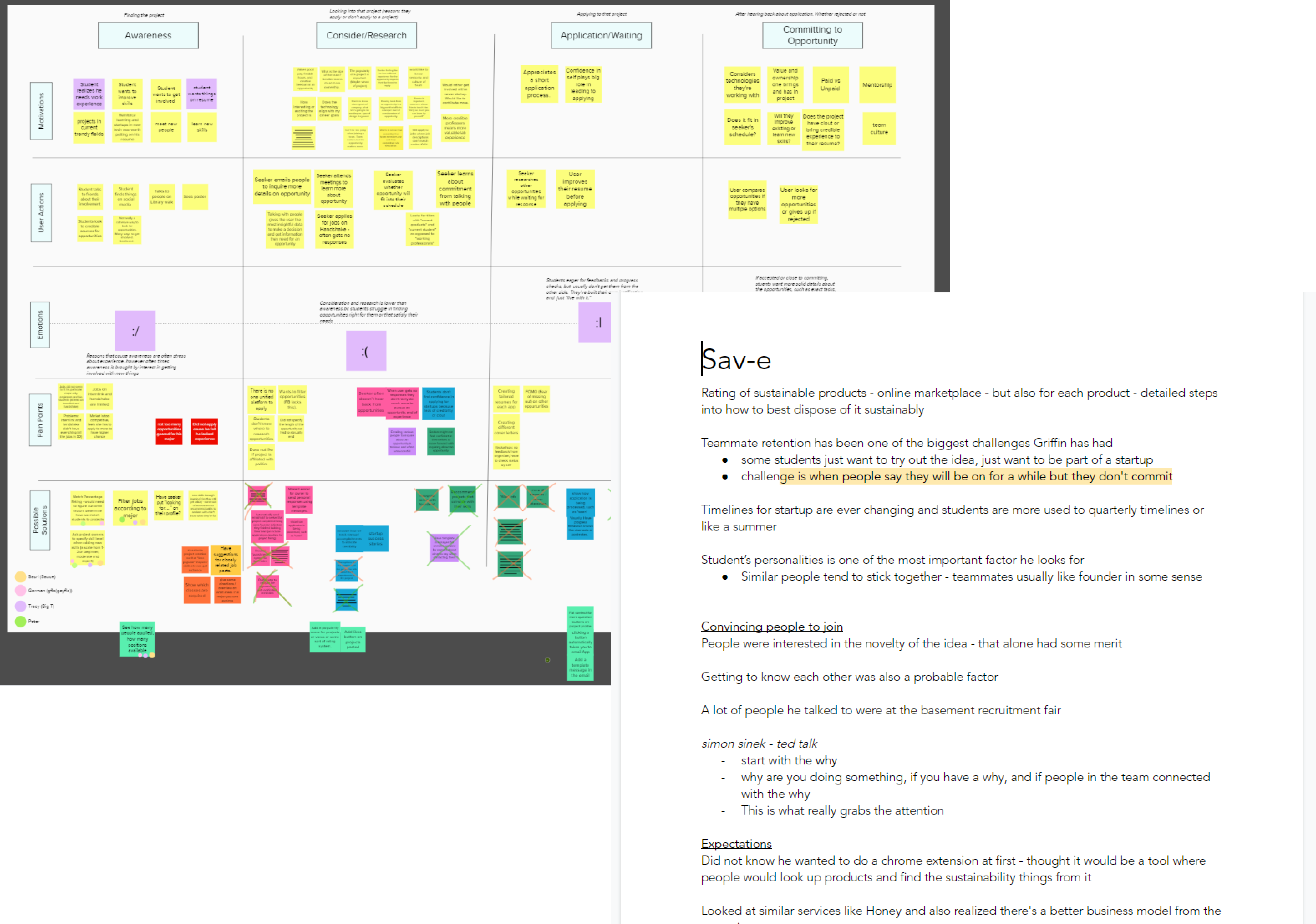
User Stories
Student Seekers
Students looking to find new project opportunities.
1. As a full-time student seeker, I want to apply to jobs quickly in order to save time for school, work and other activities.
2. As a student seeking work experience, I want to find projects that interest me and match my skills to build up my work experience for internships.
Student Creators
Students who have projects and are looking for teammates.
1. As a project creator I want to find people with the skills I need to help me build my project.
2. As a project creator I want to know all I need about a applicant so I know if they’ll be a good fit for the role and team.
3. As a project creator I want to be able to manage &communicate with applicants to not have to get external help to manage applicants.
Competitive Analysis
We looked into what methods were currently being used by some of our potential users. We documented what worked well , what didn't work as well and also what features were common between competitors.
There weren't a lot of products out there trying to accomplish what we at Collabs were trying to accomplish but we did find 2 competitors:
Startup Tree (Direct Competitor)
A web based app connecting students with other students but the product only catered to those involved in tech.
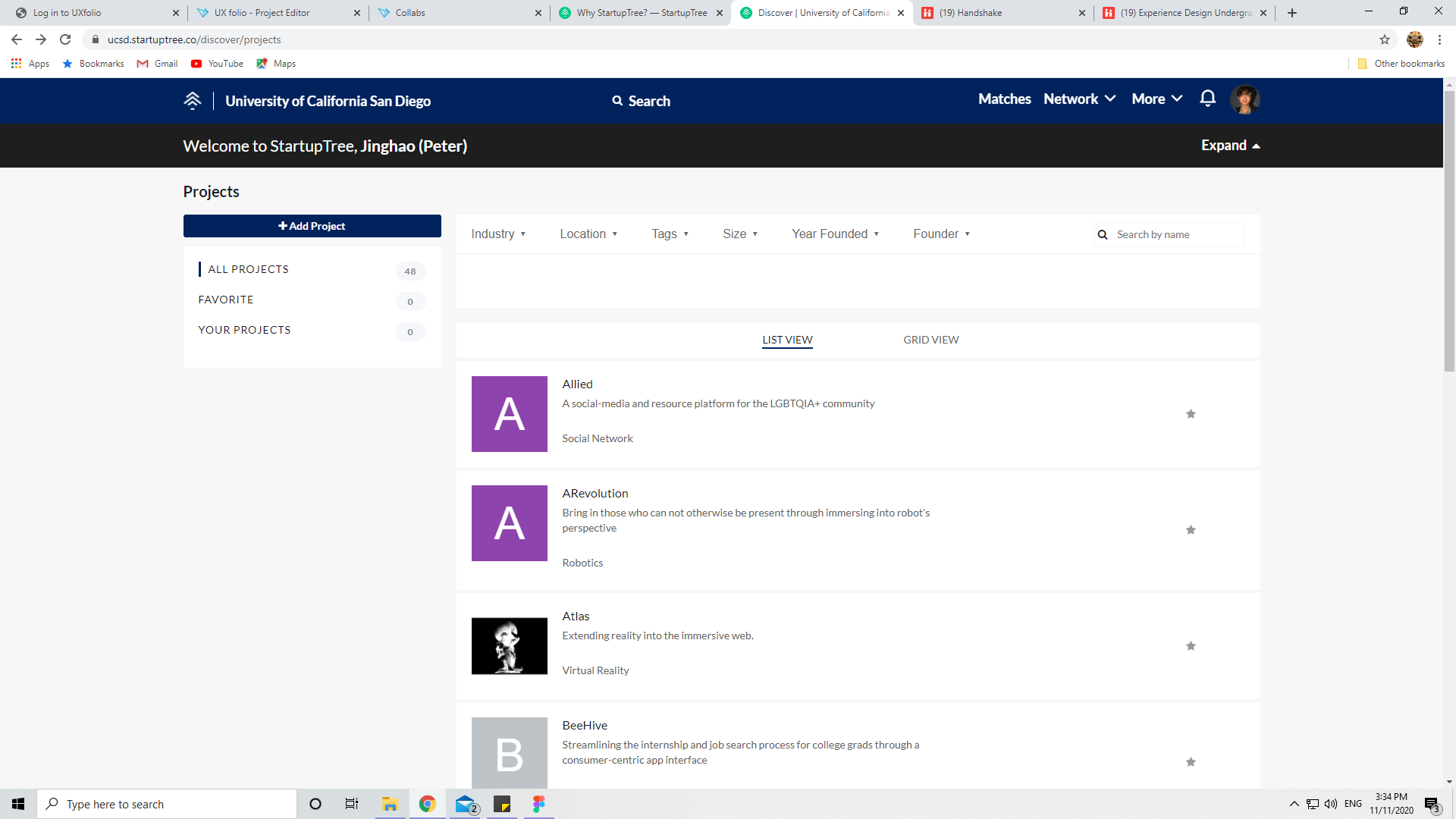
Handshake (Not a direct competitor)
A college recruiting platform. Web and mobile app. Although not a direct competitor as Handshake was mostly focused on professionals, handshake did provide valuable insights into the hiring process.

Why mobile?
We built Collabs as a mobile iOS app because certain elements of the app were already built on iOS as the founder and development team were most proficient in iOS. After weighing the pros/cons we chose to stick to mobile iOS app for MVP.
PROS:
- Can meet deadline for MVP launch
- Mobile app enables features like notifications that web apps don't allow
- Being constrained to mobile will help us focus and perfect our main features
CONS:
- Reduce potential user base
Flows
Now that we had a good understanding of what who the users were , the features we were priortizing for MVP and the user stories, we began creating flows.
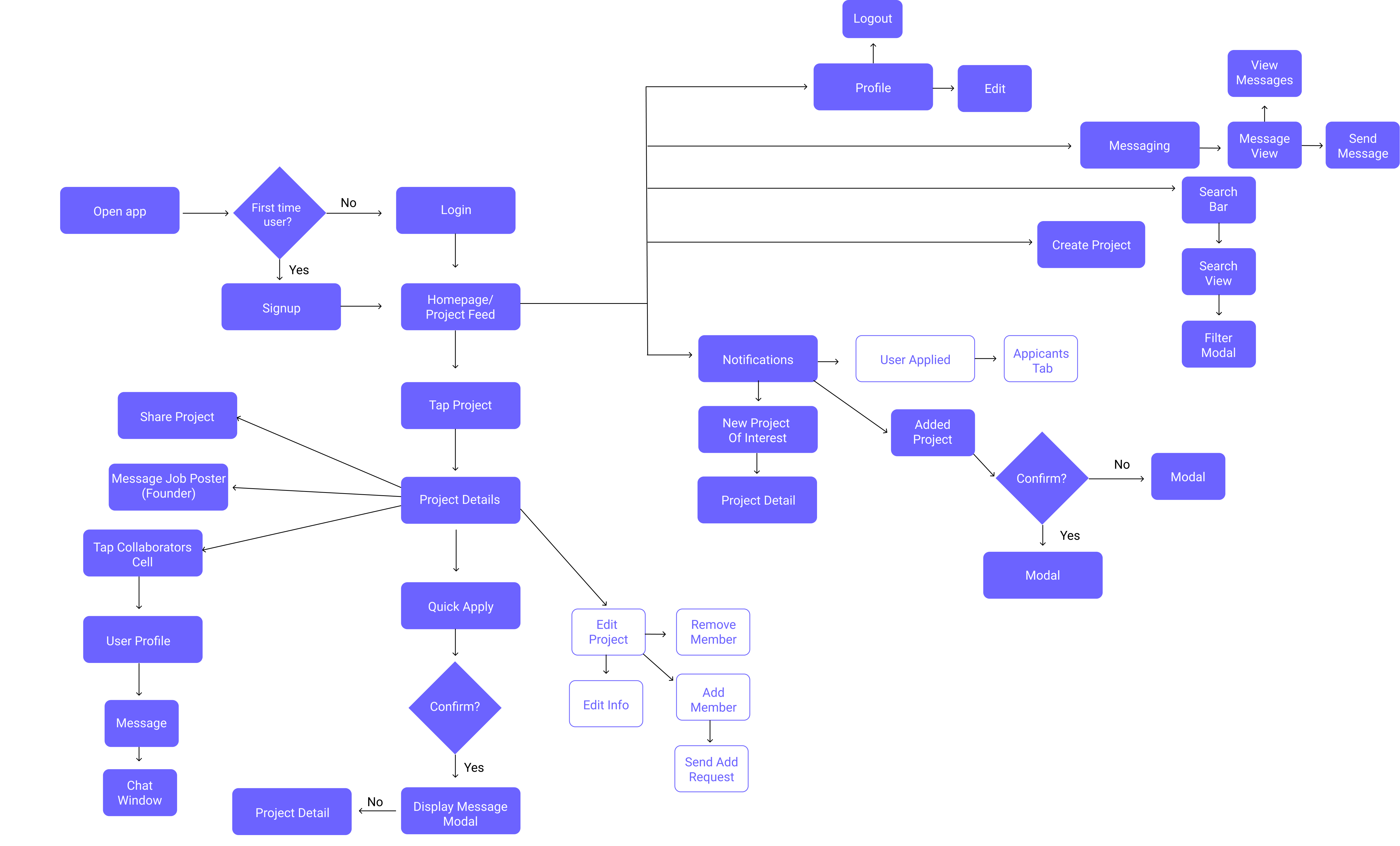
Ideation
Once we had built user flows we started ideating. We held ideation sessions for particular flows / features that would potentially make Collabs stand out.
Lo-Fi Designs
During the low fidelity designs we initially began with close collaboration with exercises like crazy 8's. Then we worked in silos to refine some of the ideas and shared these designs weekly with the team, until we came to an unanimous decision on the design.
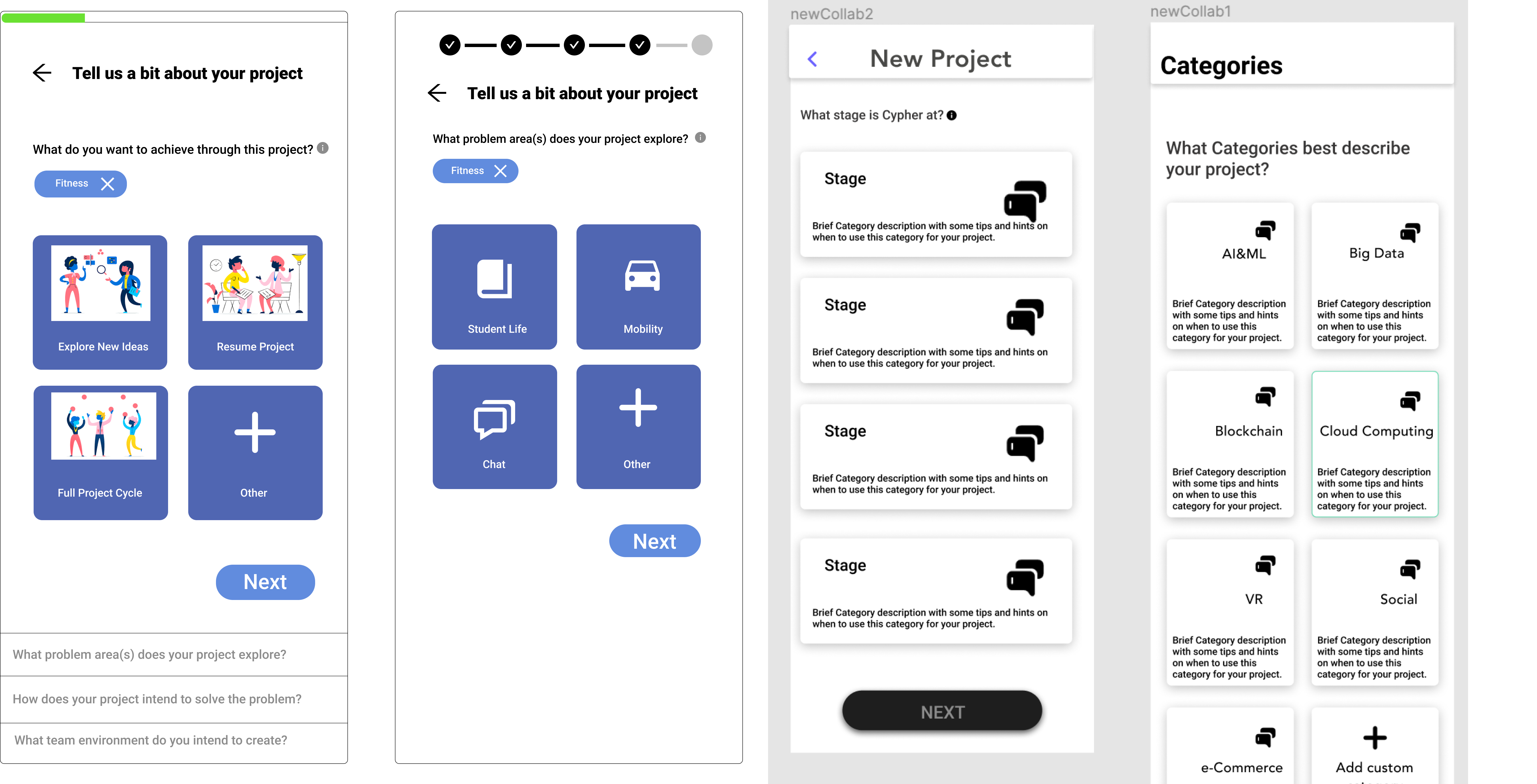
(Mini) Design System
We looked at what elements can be reused through out the app and for more efficient development and scalability we decided to make some elements reusable components.
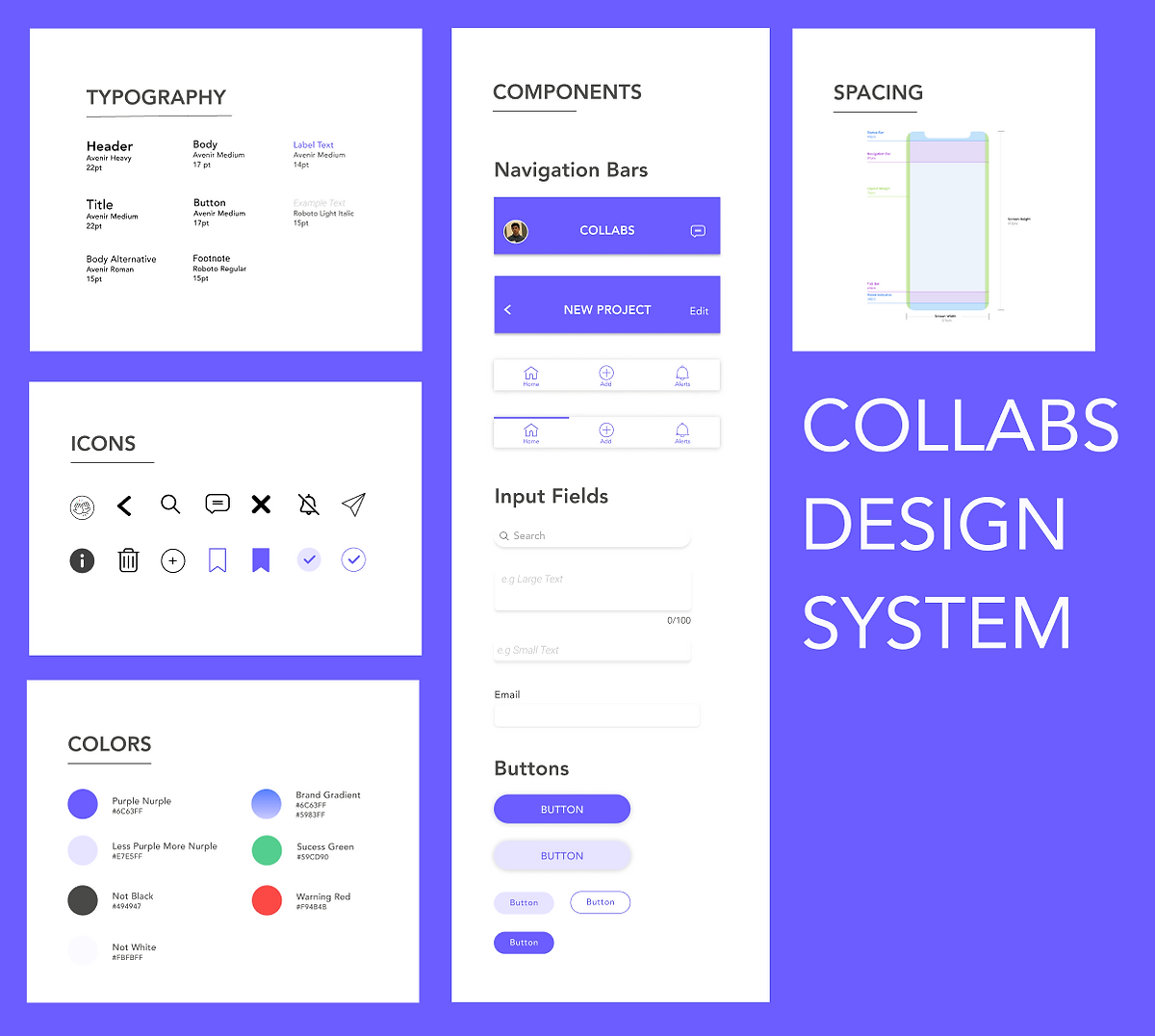
Hi-Fi Designs
We applied the design system and branding to our final version of mid fidelity prototype to get our high fidelity version. We constantly dog tested the prototype on the app and refined it to bring the high fidelity version to seem as real as possible to a fully developed app.
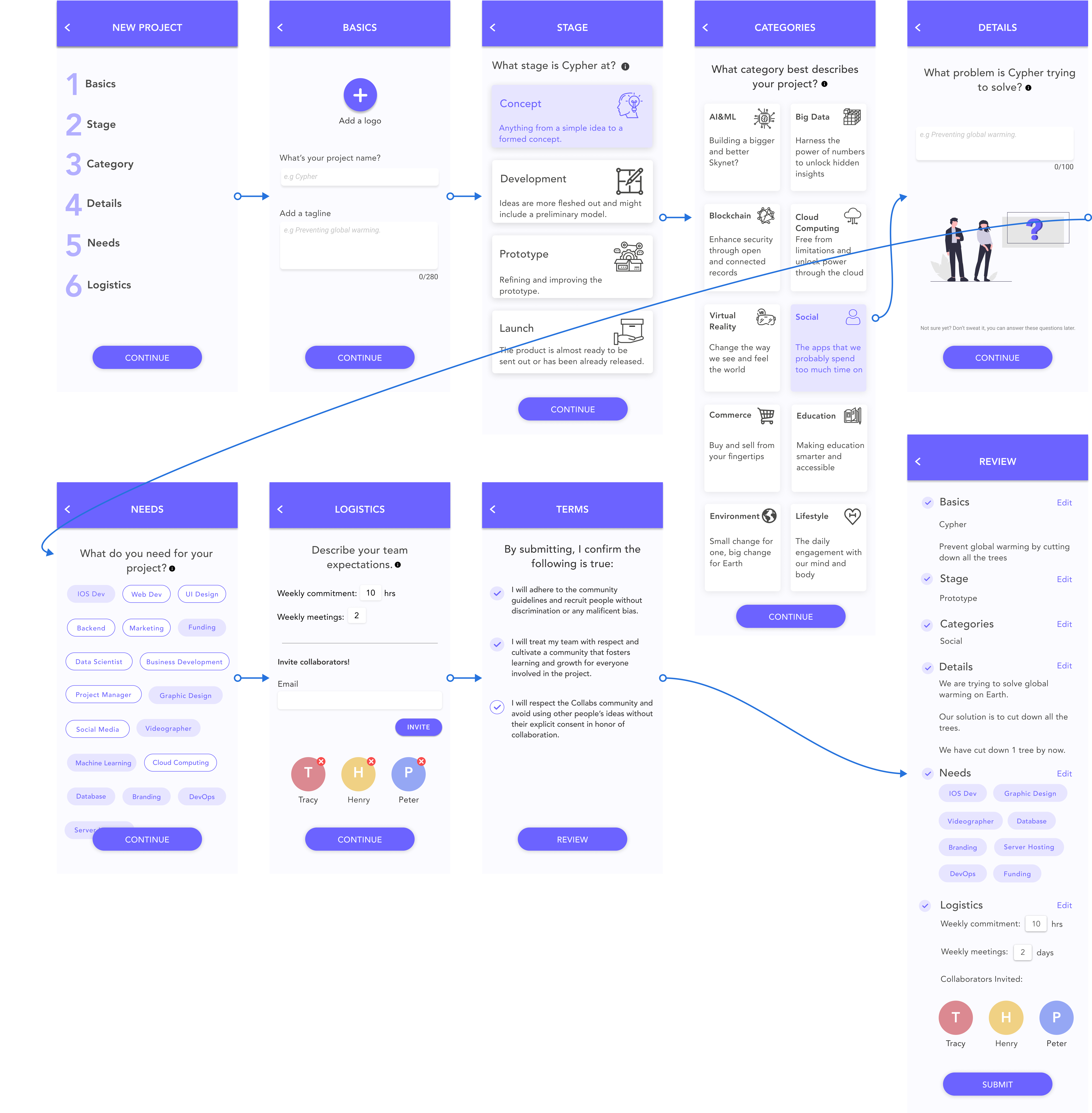
Testing
We user tested one of our core flows, the project creation flow, using a high fidelity prototype.
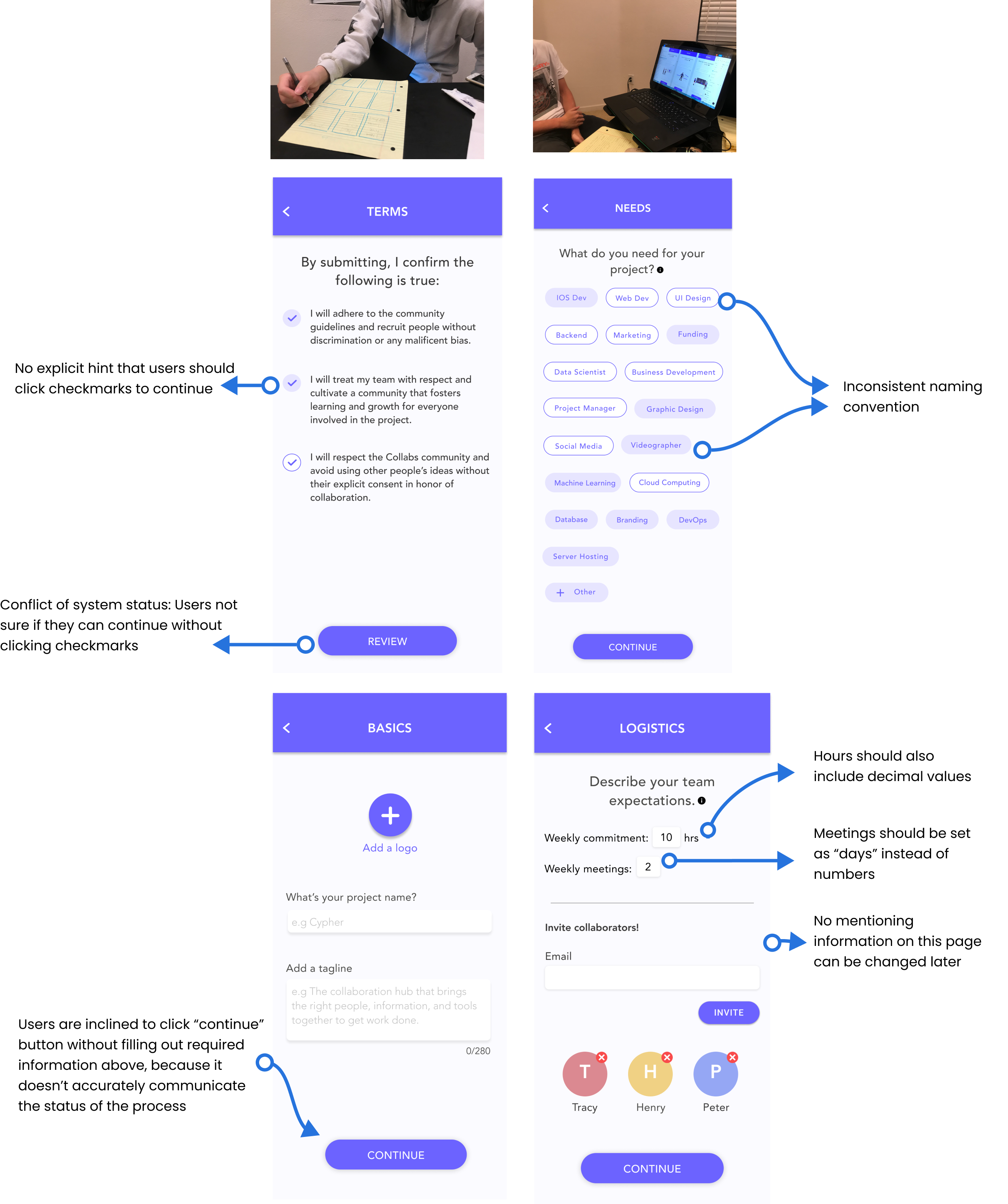
Launch
We successfully launched Collabs to the app store on May 13th 2020 🎉!
Unfortunately the app was short lived as many team members graduated and left for new jobs and with the pandemic hitting later on we found it quite difficult to balance everything.
